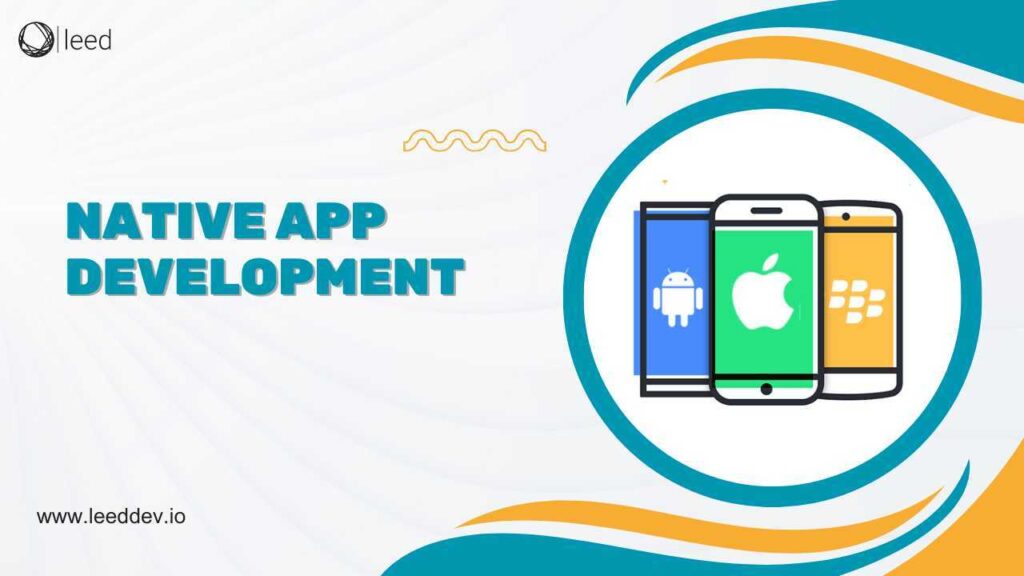

Native App Development means developing a mobile application that is designed specifically for specified platforms like iOS and Android. As compared to websites that run on the web browser, native mobile apps need to be downloaded directly from the app store. Native mobile applications are built for specific platforms, so they provide high user engagement compared to hybrid apps. These apps also provide better performance and increased compatibility.
Some of the examples of Native App Development are as follows:
The given table will clearly explain the differences between Native App and Cross Platform Development:
| Aspects | Native Development | Cross-Platform Development |
| Development Languages | Platform-specific (Swift, Java, Kotlin) | Universal (JavaScript, Dart) |
| Performance | Optimal, directly uses platform features | Slightly lower due to the abstraction layer |
| Development Time | Longer (separate codebases) | Shorter (code-sharing across platforms) |
| Maintenance | Requires separate maintenance | Easier due to shared codebase |
| Access to Features | Full access to device features | Access to many native features, but not all |
| Cost | Higher development costs | Lower development costs |
For Native Android App Development, you can use languages like Java, Kotlin, and C++. Following are some of the important Native Android App Development tools:
For native iOS app development, a Mac computer is required. The languages used for iOS native app development are Objective C and Swift. Several development tools are offered by Apple, which includes:
Following are some of the advantages and disadvantages of Native App development:
Some of the advantages of native application development are given below:
The disadvantages of native application development are as follows:
Some of the best Native app development frameworks of 2023 are as follows:
Flutter is an open source framework that is used for Android and iOS development. A single code base is used in Flutter. The framework contains different widgets, a rendering engine and different resources that can help developers build intuitive apps. Some of the features of the Flutter platform are as follows:
Xamarin is an application development framework that is used to develop highly native mobile apps for iOS and Android. The programming languages used by Xamarin are .NET and C#. Xamarin is owned by Microsoft and allows developers to create a single, shared UI codebase for multiple platforms. Some of the features of Xamarin are as follows:
An open source framework that is used for creating progressive web apps, hybrid and cross platform apps. The framework is built with Apache Cordova and Angular, which helps developers build apps for Android and iOS easily. Ionic allows developers to employ different UI components in the app framework easily. Some of the features of Ionic are as follows:
Native Script is an open source framework through which developers can reduce the time and code of app loads. The framework was developed by Progress Telerik. Native Script allows programmers to develop apps which are Vue.js, Typescript, CSS, Javascript, and Angular enabled. The features of Native Script are given below:
Swiftic is one of the best native app development frameworks for Android and iOS. The software is best for small businesses and has helped to build more than 1,00,000 apps since 2010. Users can create unique applications with Swiftic, allowing developers to integrate data from the internet easily. Features of Swiftic are as follows:
During the mobile app development project, choosing between native app development or cross platform development is crucial. Well, the answer depends on various factors. The most important factor is the operating system for which you are developing the app. If you specifically want to build an app for Android or iOS, then you need to choose Native App development. However, if you want to target a large audience, then it’s better to choose cross platform development. Native apps offer better performance and optimal user experience, whereas cross platform delivers a cost effective approach. If you want an app with increased security and multiple features, the native approach is better. But if you are worried about speed and cost, then you need to choose a cross platform approach.
Leed Software Development is one of the best native app development companies. The company is focused on providing a range of services to their clients. Some of the main services provided by Leed Software Development include:
The given table will give you a more clear idea about the company:
| Company Name | Founded In | Budget | Rate Per Hour | Headquarters | No of Employees | Additional Information |
| Leed Software Development | 2020 | $30000 -$50000 | $30 – $50 | Canada, Germany, and Pakistan | 50 – 100 | Develops responsive apps for their target audience using the latest technologies, tools and programming languages |
To conclude, 2022 was marked by 35.3 billion app downloads between Apple Store and Google Play stores alone, which highlights two primary approaches for mobile app development: Native Development and Cross-Platform Development. Native app development for platforms such as iOS and Android offers superior user engagement, performance and compatibility – such as WhatsApp, Spotify or Waze – making for superior experiences for end-users. Notable examples include WhatsApp, Spotify or Waze. The top platforms for native application development are Flutter, Xamarin, Ionic and Native Script. Leed Software Development stands out as a provider of the finest native mobile app development services. So, contact us today and build the most impressive and engaging apps!